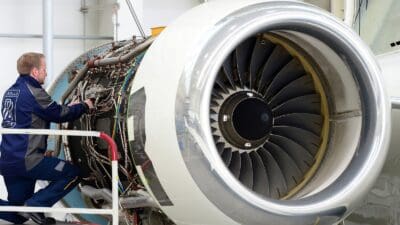With the BP (LSE: BP) share price near 303p, the forward-looking dividend yield is around 5% for 2022. So, is the dividend safe?
In attempting to answer that question, I’d first point out the BP dividend hasn’t been safe. For example, the historical dividend yield for 2019 is around 9.7% — higher than the anticipated yield for next year. And the reason for that is the directors have slashed shareholder dividend payments.
BP’s shrinking dividends
2019’s dividend was 41 US cents per share, 2020’s 32 cents, and City analysts have pencilled in a payment of around 21 cents for 2022. The direction of travel is clear. And it’s the wrong way!
In fairness, there was a plunge in oil prices in 2020. And that was reflected in a collapse of BP’s operating cash flow. This year, thankfully, the oil price has recovered somewhat and so has BP’s cash flow. Nevertheless, I’m not holding my breath while waiting for the dividend to rise back to former levels. I reckon BP has much greater and longer-term challenges than a mere fluctuating oil price.
After all, the world is trying to move away from using oil. And in the long term, BP’s traditional oil business looks set to decline. I reckon the directors’ previous decisions about shareholder dividends are indicating that uncertain times are ahead for the business. At least, that’s my reading of the situation.
But, of course, BP isn’t just rolling over and waiting to expire. Last Tuesday’s second-quarter report was upbeat about the firm’s progress expanding new lines of business, such as solar power, offshore wind generators, convenience stores, and electric vehicle charging points.
Good progress with the integrated energy strategy
Chief executive Bernard Looney said the company is making “good progress” with its strategy to become an integrated energy company. And the strong oil price helped the company deliver a strong financial performance “while investing for the future in a disciplined way.”
BP actually increased its quarterly dividend by 4% and pledged to begin a $1.4bn share buyback programme. Looney said surplus first-half cash flow would finance the moves. But I reckon using the word ‘surplus’ is questionable. After all, BP still carried a net debt pile of around $33bn at the end of the second quarter despite managing to reduce its borrowings a fair bit in the period.
When it comes to cash flow, the strong oil price is BP’s friend. But oil prices are more than capable of cycling down again. And it will probably be years before alternative lines of business render the effects of oil revenue insignificant.
BP’s future looks to me like it will involve growing its new, green energy businesses and managing the decline of its old oil business. It’s possible the overall BP business will grow as a net result in the years ahead.
But, to me, the company’s future looks uncertain. So I’m not selecting the stock as one of my dividend-led investments.







